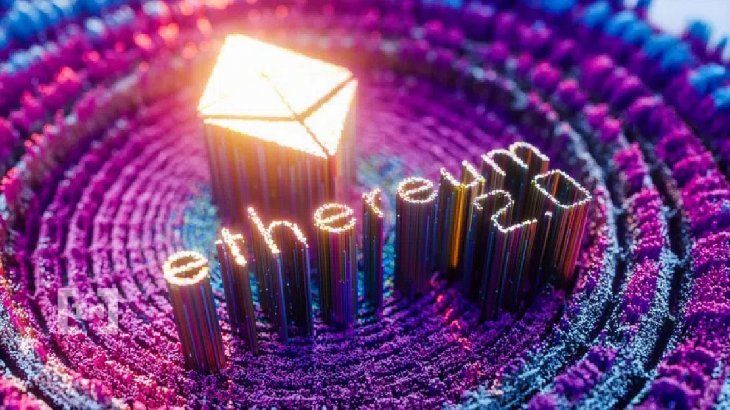Ethereum is more than a cryptocurrency. It is one of the main blockchains that exist, thanks to being a pioneer in improving transaction times and scalability, things that Bitcoin suffered from in its beginnings.
. The difference is that Layer-3 strings will likely be optimized for specific purposes or within a single entity. Layer-3 refers to protocols or systems built on top of Layer-2 solutions.
Talk about Ethereum is, for many, talking about surely the second cryptocurrency more importantly, behind Bitcoin. But there is much more behind Vitalik Buterin’s invention. Ethereum is one of the main blockchains that exist, thanks to being a pioneer in improving transaction times and scalability, things that Bitcoin suffered from in its beginnings.
The content you want to access is exclusive to subscribers.
Currently, Layer-2 of Ethereum is used by a large number of developers of decentralized applications (called dApps), among which stand out Polygon, Starknet, Arbitrum, Optimism and Baseamong other.


Now, to understand what Ethereum involves in its different layers, we have to understand its technology well. Ethereum works as a network of Layer-1, serving as the primary blockchain. In contrast, a protocol Layer-2 is an external solution that can be incorporated with a Layer-1 blockchain.
A Layer-2 blockchain is a network or technology that works on top of an existing blockchain protocol, improving its scalability and efficiency. Ethereum requires a Layer-2 solution to address several challenges present in its Layer-1 architecture.mainly focusing on scalability, transaction speed, transaction costs, network efficiency, and support of decentralized applications.
What advantages does Ethereum Layer-2 have?
Let’s look at some:
- Scalability: Ethereum Layer-1 can process a limited number of transactions per second (TPS), leading to congestion during periods of high demand. Layer-2 solutions can handle a much larger volume of transactions, processing them off-chain and then settling the results on the Ethereum main chain, significantly increasing the overall TPS.
- Transaction speed: During peak hours, transactions on Ethereum Layer-1 may take several minutes to confirm. Layer-2 solutions can offer near-instant transaction finality, improving the user experience for applications that require quick interactions.
- Cost: High demand on the Ethereum network leads to increased gas fees, making transactions more expensive. Layer-2 solutions reduce cost by handling transactions off-chain, where processing is cheaper, and only using the main chain for final settlements.
- Network efficiency: By offloading a significant portion of transaction weight to Layer-2 solutions, the Ethereum main chain remains less congested and more efficient. This improves the overall health and performance of the network.
- Support for decentralized applications (dApps): The growing number of dApps and users on Ethereum requires scalable infrastructure to function smoothly. Layer-2 solutions provide the scalability needed for dApps to operate efficiently without being hampered by mainchain limitations.
Scaling solutions Layer-1 and Layer-2 They are complementary strategies aimed at improving the speed and capacity of blockchain networks to accommodate a rapidly expanding user base. These approaches are not mutually exclusive. Many blockchain networks are currently exploring a combination of Layer-1 and Layer-2 solutions to bolster scalability while championing security and decentralization.
Ethereum’s largest Layer-2
Polygon (MATIC) is Ethereum’s largest Layer-2 by market cap and is an independent chain with its own validators, security models, blocks and nodes. However, if you are a user on a sidechain like Polygon, still based on Ethereum and Polygon security models. This effectively turns Ethereum into a fully-fledged multichain system, often referred to as the “Internet of blockchains.” MATIC, which is Polygon’s native token, is an ERC-20 token that runs on the Ethereum blockchain.
Looking at the future of Ethereum, many believe that most transactions they will not be made directly in Ethereum, emphasizing the importance of Layer-2 solutions. Transactions related to staking and rollups of Layer-2 protocols are expected to take up the majority of Ethereum’s block space as adoption accelerates.
Ethereum.jpg

Courtesy: BeInCrypto
To build on Layer-1 and Layer-2 protocols, Layer-3 are also emerging, also known as application layer. The difference is that Layer-3 strings will likely be optimized for specific purposes or within a single entity. Layer-3 refers to protocols or systems built on top of Layer-2 solutions. These improve functionality, interoperability, or provide specialized services to provide high performance without network congestion or computing problems.
Thus, Layer-2 and Layer-3 solutions are essential for Ethereum to scale effectively, reduce transaction costs, increase speed, and support a larger number of users and applicationsall while maintaining the security and decentralization that are fundamental to the blockchain.
Chief Content Officer of BingX.
Source: Ambito
I am a 24-year-old writer and journalist who has been working in the news industry for the past two years. I write primarily about market news, so if you’re looking for insights into what’s going on in the stock market or economic indicators, you’ve come to the right place. I also dabble in writing articles on lifestyle trends and pop culture news.




